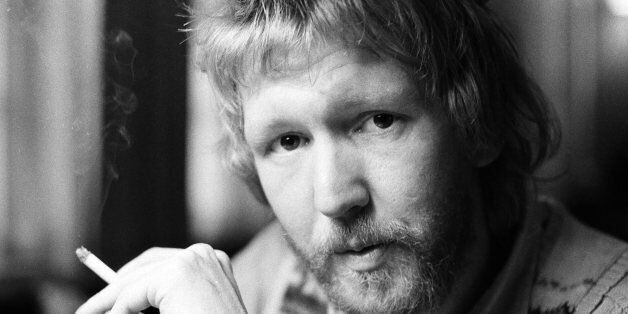
Anybody studying the works of William Wordsworth doesn't get far before they encounter his famous phrase "the child is father of the man" - a useful catchphrase when exploring the autobiographical element of his poetry. It's not a sentiment that's often applied to pop music, but in the case of the singer-songwriter Harry Nilsson (1941-1994) it could hardly be more apt.
Born into a large boisterous Irish-American Brooklyn family, and abandoned by his father just months after his birth, Nilsson drew on the appalling poverty and deprivations of his childhood to write some of the most compelling songs of the 1960s and 70s. His mother Bette was an alcoholic, given to bouncing cheques and - in the wake of her husband's departure - to having affairs with a series of highly unsuitable men. Yet in her loneliness, she also helped her son develop his rich imagination. She fuelled his young mind with everything from tales of his Swedish grandparents' aerial acrobatic troupe to fanciful stories that his absentee father had died a war hero. (Rather than the more prosaic truth that he'd gone away to sea as an ordinary merchant sailor after one bounced cheque and one drunken episode too many.)

Harry Nilsson as a child in Brooklyn. Image courtesy of "The Estate of Harry Nilsson".
So we find his father's desertion at the heart of Nilsson's famous song "1941". In it, he wonders how an abandoned mother and child will survive and chillingly foretells what would happen to his own first-born son, as history repeated itself and Nilsson walked out on his own family. We find him exploring similar ideas in Daddy's Song which he wrote for the Monkees. And even in his riotous rock and roll classic Gotta Get Up we find an unappetising cameo portrait of his sailor father's final visit home to see his mother and "pound her for a couple of days".
As well as incorporating graphic images of his childhood into his songs, Nilsson was also an escapist. He also loved to explore "dreams and wishes" in his lyrics, and anybody knowing his story can hardly help the tug on their heartstrings from hearing "Let me tell you 'bout my best friend", exploring all the things that boys and their dads share in a happy childhood. It was his theme music to the father and son TV comedy The Courtship of Eddie's Father, and for thousands of children across America, such an integral a part of their own experience of growing up that it became his best-known song. Hard on its heels was the wistful "Puppy Song", written for the singer Mary Hopkin about a child's longing for a pet.

Harry Nilsson's Mum. Image courtesy of "The Estate of Harry Nilsson".
Once he'd begun to weave the story of his early years into his lyrics, Nilsson carried on doing so for his later life. So, as his biographer, I found myself looking at virtually all his songs for clues. Growin' Up from one of his earliest sessions, recalls his pubescent discovery of sex with his neighbour Anne Marie Schultz. She tries on "mummy's shoes and mummy's grown up necklace" as she flirts with him. Then there's Without Her, which was covered by Lulu, Astrud Gilberto and Herb Alpert among others: a wistful look back at his separation from his first wife Sandi. Nilsson was given to writing his songs at night, after shifts as a computer operator in a bank, and this describes him alone in his chair wishing that she would be there. Most poignantly, the song he wrote for the band Three Dog Night, One (is the loneliest number), describes much of his own sense of isolation as a child - although with a typical touch of Nilsson humour it puns on the equally autobiographical idea of "doing a number" - 1960s slang for smoking a joint!
Right through his life, Nilsson went on pouring his life and experiences into his lyrics, and there are few artists whose life can be traced, song by song, album by album, as graphically as his. His split from his second wife, his experiences of drugs and alcohol, and his final, fulfilled family life with his third wife Una and six children all find their way into one of the most fascinating collections of music of the latter half of the 20th century.
Nilsson - The Life of a Singer Songwriter by Alyn Shipton is out now from Oxford University Press.